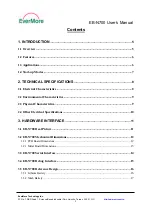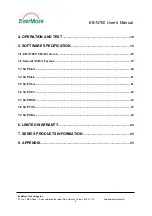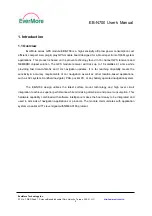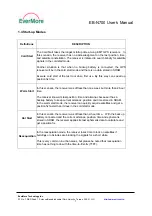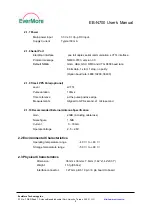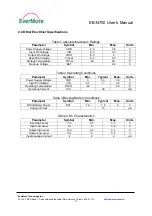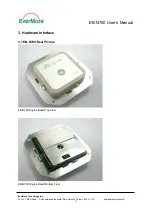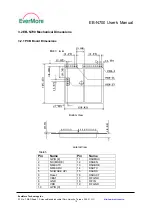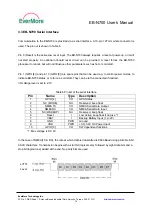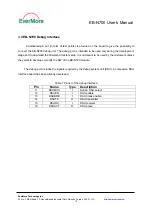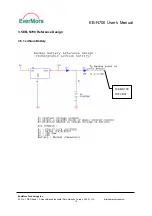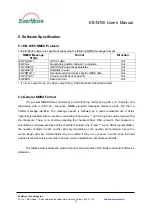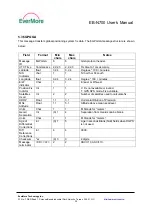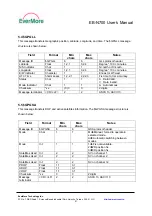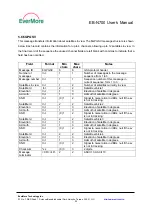
EB-N700 User’s Manual
EverMore Technology Inc.
2F, No.7, R&D Road 1, Science-Based Industrial Park, Hsinchu, Taiwan, 300, R.O.C.
http://www.emt.com.tw
7
1.4 Start-up Modes
Definitions
DESCRIPTION
Cold Start
The Cold Start takes the longest startup time among EMT GPS receivers. In
this scenario, the receiver has no acknowledgment on the last position, time,
and satellite constellation. The receiver is initiated to search blindly for satellite
signals in the cold start mode.
Another situation is that when no backup battery is connected, the GPS
receiver will be in the cold start mode and there is no data stored in SRAM.
Execute cold start of the test tool when first use. By this way can speed up
position fix time.
Warm Start
In this scenario, the receiver was off less than one week but more than 2-hour
time.
The receiver knows its last position, time and almanac because it has a
backup battery to keep current almanac, position and time stored in SRAM.
In the warm start mode, the receiver can quickly acquire satellites and get a
position fix faster than it does in the cold start mode.
Hot Start
In this scenario, the receiver was off less than 2-hour time. With the back up
battery connected and the current almanac, position, time and ephemeris
stored in SRAM, the receiver applies its last ephemeris data to calculate and
get a position fix.
Reacquisition
In the reacquisition mode, the receiver takes time to lock on satellites if
buildings or obstacles are blocking the signals for a short while.
This is very common in urban areas, but please be noted that reacquisition
time has nothing to do with the time-to-first-fix (TTFF).



